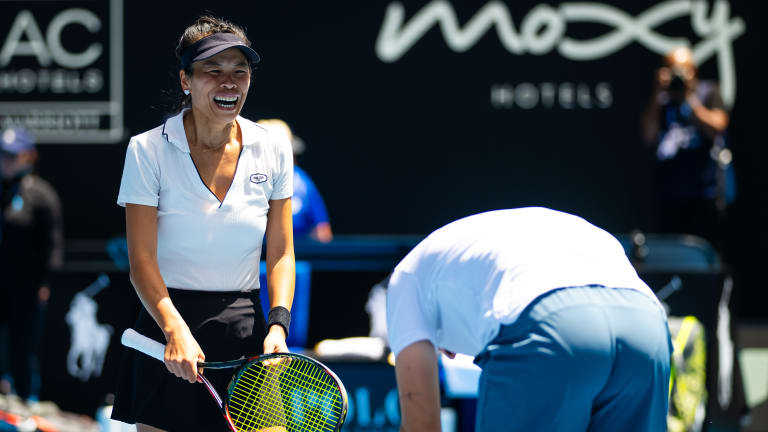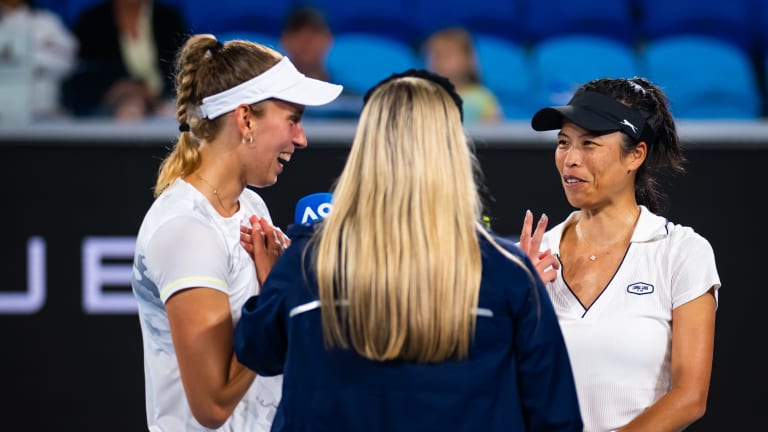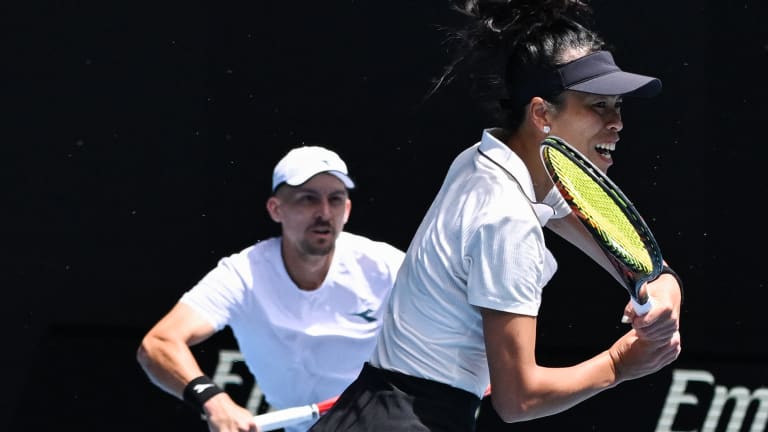Australian Open
The doubles mastery, and radical fun, of Hsieh Su-Wei
By Jan 29, 2024Australian Open
Australia at Last: Reflections on a first trip to the AO
By Jan 29, 2025Australian Open
Alexander Zverev must elevate his game when it most counts—and keep it there
By Jan 27, 2025Australian Open
Jannik Sinner draws Novak Djokovic comparisons from Alexander Zverev after Australian Open final
By Jan 26, 2025Australian Open
Alexander Zverev left to say "I'm just not good enough" as Jannik Sinner retains Australian Open title
By Jan 26, 2025Australian Open
Jannik Sinner is now 3-0 in Grand Slam finals after winning second Australian Open title
By Jan 26, 2025Australian Open
Taylor Townsend and Katerina Siniakova win second women's doubles major together at the Australian Open
By Jan 26, 2025Australian Open
Madison Keys wins her first Grand Slam title at Australian Open by caring a little bit less
By Jan 25, 2025Australian Open
Henry Patten, Harri Heliovaara shrug off contentious first set to win Australian Open doubles title
By Jan 25, 2025Australian Open
Aryna Sabalenka takes a rare loss in Australian Open slugfest
By Jan 25, 2025Australian Open
The doubles mastery, and radical fun, of Hsieh Su-Wei
Don't let her advanced age or unique playing style fool you—lest you be on the wrong side of a major beating.
Published Jan 29, 2024
Advertising

Hsieh Su-Wei and her mixed doubles partner, Jan Zielinski.
© 2024 Robert Prange
Advertising

Hsieh and Elise Mertens share a laugh after their semifinal doubles win.
© 2024 Robert Prange
Advertising

Hsieh has hands that would be useful for running a shell-game con, and the ball she hits wouldn’t rupture a wet Kleenex. She annoys the hell out of opponents, but almost always arrives at her destination.
© AFP or licensors